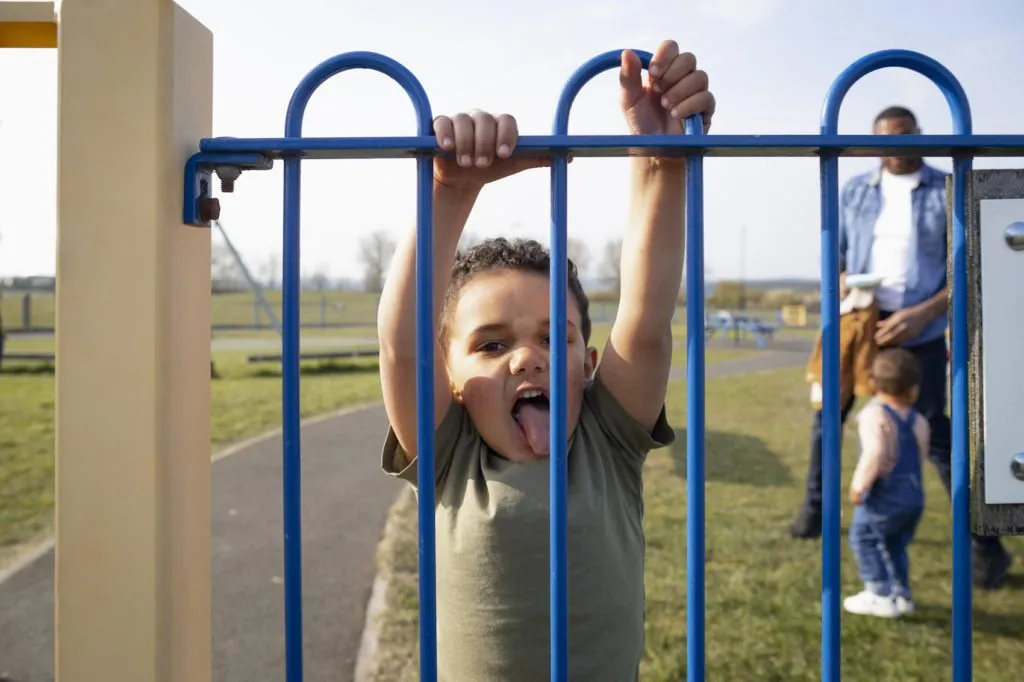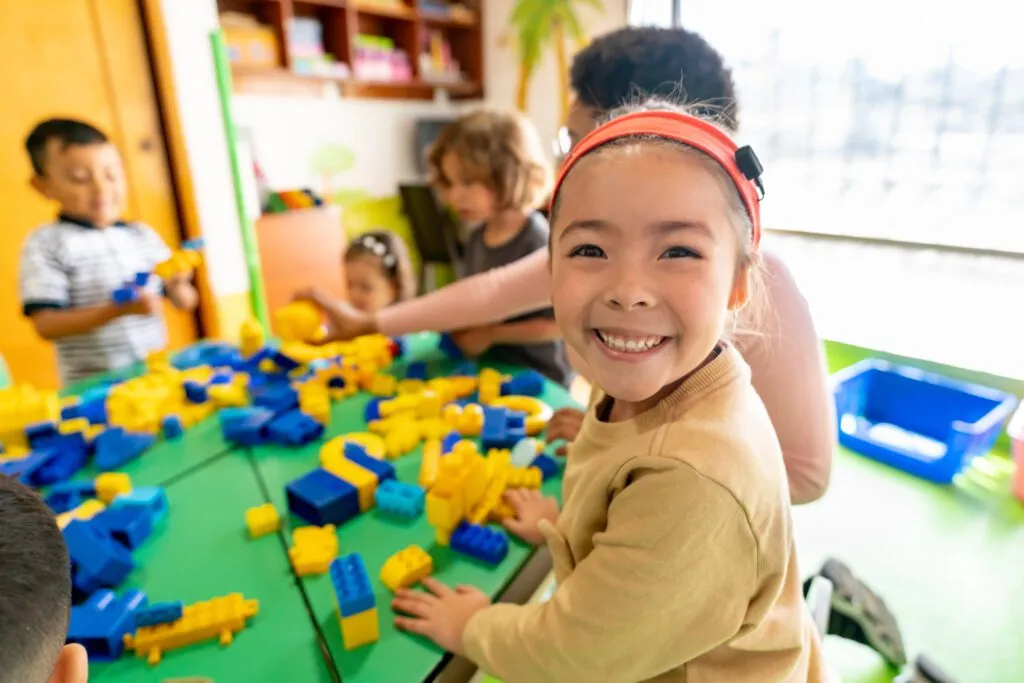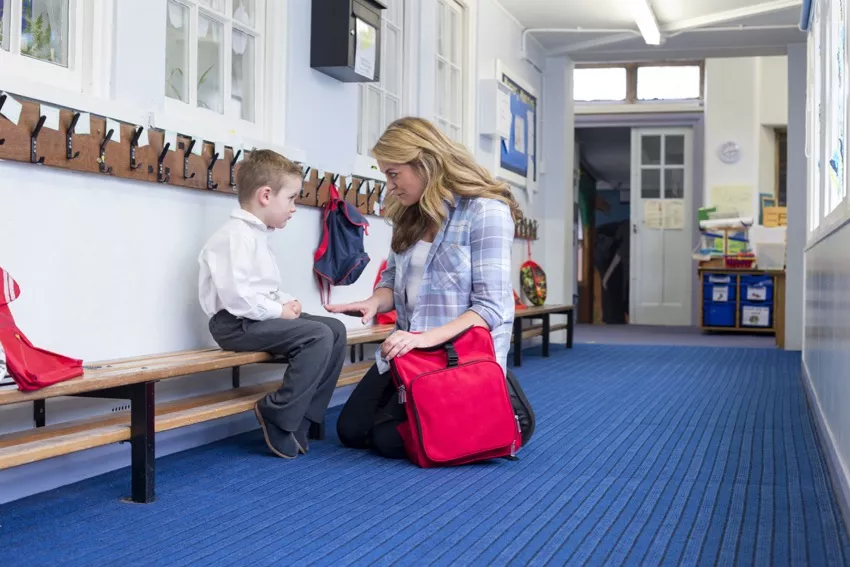When It Comes to Challenging Behaviors, Consider the Source (Even if It’s You)


When we ask teachers what topic they would like us to address, the answer is overwhelmingly consistent. “Please, oh please, help us with challenging behaviors!” is the resounding cry, and I get it. We all get it.
Many a training session I’ve delivered revolves around preventing challenging behaviors. We talk at length about setting limits, explaining the consequences of unwanted behaviors, the importance of routine and structure, and how to reinforce positive behaviors.
And then many teachers leave the session thinking, “Yeah, but….”
“Yeah, but that stuff won’t work with Jennifer.”
“Yeah, but she doesn’t know my Dylan.”
“Yeah, but I tried all those things and Haziel is still out of control.”
Indulge me, if you will, in a vignette from the real world.
I was working at a Head Start program when I was invited to observe a child—let’s call him Adam—whose “aggressive” behavior, according to his teachers, was “terrifying” the entire class. Adam was a 5-year-old in a prekindergarten classroom, having turned five just after the kindergarten cut-off date. So—he was quite likely one of the oldest children in the class. He also was an unusually large child: tall for his age and athletic, he could easily pass as an 8-year-old. When I went to observe his classroom, I noticed that there were four other adults in the room—two teachers and two assistants (to help manage the chaos that Adam inspired, I was told). While I watched Adam, I also watched how the teachers worked together, how they communicated, and how the schedule of the day “flowed.”
The morning started well, and besides noting that Adam’s booming, excited voice bounced off the high ceilings, I didn’t notice anything unusual. During choice time, I watched Adam wander around the room looking for something to do. He kept returning to the Technology area, where two girls had been working at the computer since choice time began. After about 15 minutes of aimless wandering, Adam stood behind the girls and said, “Come on! I want a turn!” A teacher across the room yelled back at him, “No shouting, Adam. You’ll have a turn.” None of the classroom staff went to assist Adam or monitor the turn-taking.
After a few more minutes of waiting and watching, Adam started to pace behind the girls. He reminded me of a tiger in a cage, pacing back and forth, and I could sense that he was getting anxious. Finally, he reached over the girls, grabbed the timer off the top of the computer, and ran with it to one of the teachers. “Please, can you set the timer, so I can have a turn?” he asked in his loud, booming voice. The teacher turned the timer over in her hands and then gave it to me, asking, “Do you know how to work this?” It was April, and the school year started in September. Had this teacher really not known how to use the timer for seven months? I was shocked. I set the timer for a couple of minutes knowing the girls had already been at the computer for more than 25 minutes. Adam finally got his turn! When the timer sounded to indicate the end of Adam’s 10-minute turn, he got up without incident and let the boy standing behind him have a turn.
Observing Adam closely, I didn’t see any signs of aggression—I saw boredom and frustration, which Adam’s teachers had perceived as aggressive behavior.
Adam begged the teachers for fairness and structure, but he never received it. None of the four adults in the classroom interacted with Adam while he wandered around the classroom looking for something to do. He’d been in this same classroom, with the same materials and the same teachers, since he turned three. None of the four teachers noticed that he was getting frustrated with the lack of structure in the Technology area. I heard Adam “use his words,” wait patiently, and try to enforce the rule of turn-taking. The only time the teachers noticed him was when he raised his voice at the girls in an unsuccessful attempt to get a turn at the computer. So, I had to wonder: what created the problem? Did Adam’s frustration, loud voice, and physical size create the problem, or was it the environment, structure, and classroom community?
When facing challenging behaviors, make an effort to reflect on the importance of structure, positive guidance, and clear, realistic limits. Here are a few strategies to consider:
- Make sure that the classroom’s structure and expectations are in place and reinforced regularly. For example, if timers are provided for popular interest areas, make sure there is a structure in place so that the timers are used consistently and effectively.
- Scan the classroom frequently. Notice whether all of the children are engaged in meaningful play. If you notice a child who is not, invite him to participate in an activity or simply talk with him about what he would like to do.
- If there are older children or children who have been in the same class for multiple years, consider rotating your materials more frequently. Routinely providing new or different materials and props can stimulate children’s curiosity and inspire them to try new things. For older children, offer unfamiliar and challenging experiences to keep them engaged and motivated in their learning.
- Record a video of your classroom to get a sense of how children and teachers interact. After recording and watching themselves, Adam’s teachers were surprised to hear how loud they were when they shouted across the room to one another. Not only were they modeling poor behavior for the children, they also were raising the overall volume in the classroom. Everyone had to shout louder and louder to be heard, like patrons in a crowded restaurant where the tables are too close together. We all know how unpleasant that can be!
These suggestions may seem obvious, but they are often overlooked when addressing challenging behaviors. For the majority of children, changes to the learning environment, structure, or their engagement levels will mitigate challenging behaviors. However, as teachers, we tend to focus on the behavior itself rather than its root causes or our own part in contributing to it.
Like most teachers, Adam’s teachers wanted a “quick fix” for Adam’s unwanted behavior.
When I met with the teachers after my observation, I reminded them that social–emotional development is just as complex (if not more so!) as development in all the other areas. I pointed out that the amount of planning and support we provide for social–emotional development should mirror what we provide for any other area of development and learning. I shared the classic analogy from the realm of physical development: a child needs a lot of practice to be able to tie her shoes on her own. Teachers don’t demand a “quick fix” to get a child to tie her shoes—they patiently instruct, model, and support until she acquires the skills to do it on her own. The same is true for social–emotional skill building. These are complex skills that require a lot of patience, encouragement, modeling, and ongoing support.
As teachers who are charged with the seemingly impossible task of creating and maintaining a peaceful and respectful learning environment for all, it is awfully tempting to blame the child for disrupting the status quo. But we are professionals, and we must dig deeper. We need to reflect on our own attitudes and behaviors and on the environment, we provide to ensure that children are being supported in the ways that they need to be supported. Only then can optimal learning take place, and only then can we say that we are doing our best for the children in our care.

Understanding Behavior and Supporting Positive Interactions
In this webinar, we discuss how to establish and maintain a classroom environment that communicates clear norms for pro-social behaviors.


